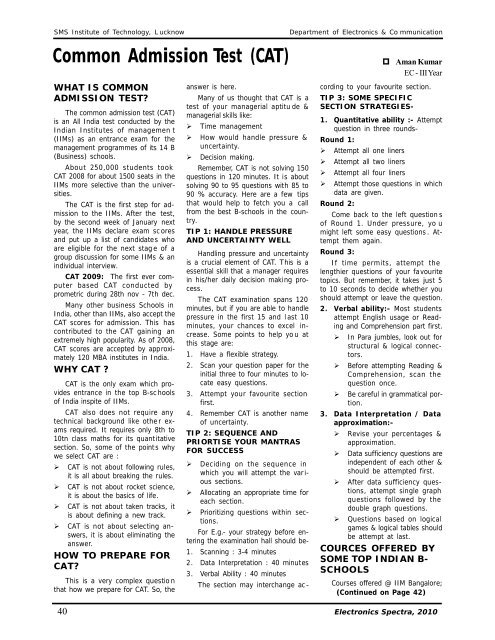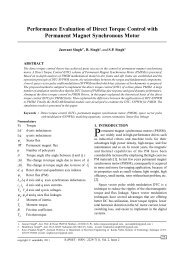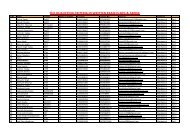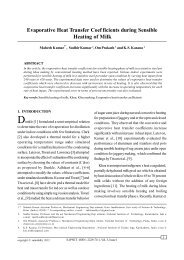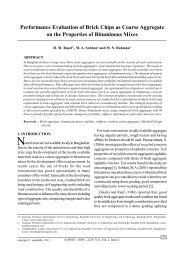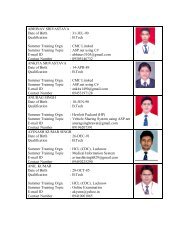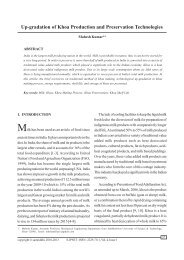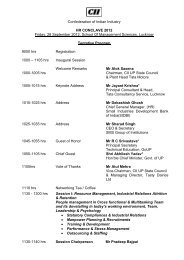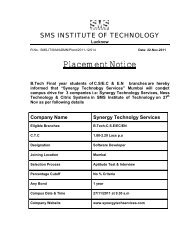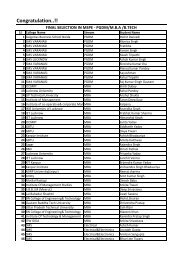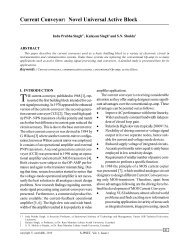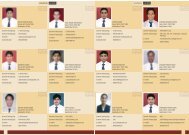Electronics Spectra - SMS Lucknow
Electronics Spectra - SMS Lucknow
Electronics Spectra - SMS Lucknow
You also want an ePaper? Increase the reach of your titles
YUMPU automatically turns print PDFs into web optimized ePapers that Google loves.
<strong>SMS</strong> Institute of Technology, L ucknow<br />
Department of <strong>Electronics</strong> & Co mmunication<br />
Common Admission Test (CAT)<br />
WHAT IS COMMON<br />
ADMISSION TEST?<br />
The common admission test (CAT)<br />
is an All India test conducted by the<br />
Indian Institutes of managemen t<br />
(IIMs) as an entrance exam for the<br />
management programmes of its 14 B<br />
(Business) schools.<br />
About 250,000 students took<br />
CAT 2008 for about 1500 seats in the<br />
IIMs more selective than the universities.<br />
The CAT is the first step for admission<br />
to the IIMs. After the test,<br />
by the second week of January next<br />
year, the IIMs declare exam sc ores<br />
and put up a list of candidates who<br />
are eligible for the next stag e of a<br />
group discussion for some IIMs & an<br />
individual interview.<br />
CAT 2009: The first ever computer<br />
based CAT conducted by<br />
prometric during 28th nov - 7th dec.<br />
Many other business Schools in<br />
India, other than IIMs, also accept the<br />
CAT scores for admission. This has<br />
contributed to the CAT gaining an<br />
extremely high popularity. As of 2008,<br />
CAT scores are accepted by approximately<br />
120 MBA institutes in India.<br />
WHY CAT ?<br />
CAT is the only exam which provides<br />
entrance in the top B-sc hools<br />
of India inspite of IIMs.<br />
CAT also does not require any<br />
technical background like othe r exams<br />
required. It requires only 8th to<br />
10tn class maths for its quantitative<br />
section. So, some of the points why<br />
we select CAT are :<br />
‣ CAT is not about following rules,<br />
it is all about breaking the rules.<br />
‣ CAT is not about rocket science,<br />
it is about the basics of life.<br />
‣ CAT is not about taken tracks, it<br />
is about defining a new track.<br />
‣ CAT is not about selecting answers,<br />
it is about eliminating the<br />
answer.<br />
HOW TO PREPARE FOR<br />
CAT?<br />
This is a very complex questio n<br />
that how we prepare for CAT. So, the<br />
answer is here.<br />
Many of us thought that CAT is a<br />
test of your managerial aptitu de &<br />
managerial skills like:<br />
‣ Time management<br />
‣ How would handle pressure &<br />
uncertainty.<br />
‣ Decision making.<br />
Remember, CAT is not solving 150<br />
questions in 120 minutes. It is about<br />
solving 90 to 95 questions with 85 to<br />
90 % accuracy. Here are a few tips<br />
that would help to fetch you a call<br />
from the best B-schools in the country.<br />
TIP 1: HANDLE PRESSURE<br />
AND UNCERTAINTY WELL<br />
Handling pressure and uncertainty<br />
is a crucial element of CAT. This is a<br />
essential skill that a manager requires<br />
in his/her daily decision making process.<br />
The CAT examination spans 120<br />
minutes, but if you are able to handle<br />
pressure in the first 15 and l ast 10<br />
minutes, your chances to excel increase.<br />
Some points to help yo u at<br />
this stage are:<br />
1. Have a flexible strategy.<br />
2. Scan your question paper for the<br />
initial three to four minutes to locate<br />
easy questions.<br />
3. Attempt your favourite section<br />
first.<br />
4. Remember CAT is another name<br />
of uncertainty.<br />
TIP 2: SEQUENCE AND<br />
PRIORTISE YOUR MANTRAS<br />
FOR SUCCESS<br />
‣ Deciding on the sequence in<br />
which you will attempt the various<br />
sections.<br />
‣ Allocating an appropriate time for<br />
each section.<br />
‣ Prioritizing questions within sections.<br />
For E.g.- your strategy before entering<br />
the examination hall should be-<br />
1. Scanning : 3-4 minutes<br />
2. Data Interpretation : 40 minutes<br />
3. Verbal Ability : 40 minutes<br />
The section may interchange ac -<br />
cording to your favourite section.<br />
TIP 3: SOME SPECIFIC<br />
SECTION STRATEGIES-<br />
1. Quantitative ability :- Attempt<br />
question in three rounds-<br />
Round 1:<br />
‣ Attempt all one liners<br />
‣ Attempt all two liners<br />
‣ Attempt all four liners<br />
‣ Attempt those questions in which<br />
data are given.<br />
Round 2:<br />
Come back to the left question s<br />
of Round 1. Under pressure, yo u<br />
might left some easy questions . Attempt<br />
them again.<br />
Round 3:<br />
Aman Kumar<br />
EC - III Year<br />
If time permits, attempt the<br />
lengthier questions of your favourite<br />
topics. But remember, it takes just 5<br />
to 10 seconds to decide whether you<br />
should attempt or leave the question.<br />
2. Verbal ability:- Most students<br />
attempt English usage or Reading<br />
and Comprehension part first.<br />
‣ In Para jumbles, look out for<br />
structural & logical connectors.<br />
‣ Before attempting Reading &<br />
Comprehension, scan the<br />
question once.<br />
‣ Be careful in grammatical portion.<br />
3. Data Interpretation / Data<br />
approximation:-<br />
‣ Revise your percentages &<br />
approximation.<br />
‣ Data sufficiency questions are<br />
independent of each other &<br />
should be attempted first.<br />
‣ After data sufficiency questions,<br />
attempt single graph<br />
questions followed by the<br />
double graph questions.<br />
‣ Questions based on logical<br />
games & logical tables should<br />
be attempt at last.<br />
COURCES OFFERED BY<br />
SOME TOP INDIAN B-<br />
SCHOOLS<br />
Courses offered @ IIM Bangalore;<br />
(Continued on Page 42)<br />
40 <strong>Electronics</strong> <strong>Spectra</strong>, 2010


